![]()
![]()
![]()
Use LEFT and RIGHT arrow keys to navigate between flashcards;
Use UP and DOWN arrow keys to flip the card;
H to show hint;
A reads text to speech;
39 Cards in this Set
- Front
- Back
|
Point
|
A location; has no shape or size
|
|
|
Line
|
A set of points that extend indefinitely in two directions; has length but no thickness or width
|
|
|
Plane
|
A flat surface made up of points that extends indefinitely in all directions; has length and width but no depth
|
|
|
Collinear
|
A name given to points on the same line
|
|
|
Coplanar
|
A name given to points on the same plane
|
|
|
Space
|
A boundless, three-dimensional set of all points
|
|
|
Congruent
|
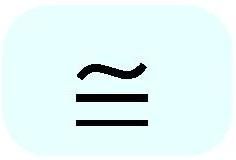
Figures that have equal measures; figures that are the same shape and size;
|
|
|
Segment
|
A part of a line which consists of two endpoints and all the points between them
|
|
|
DE
|

the measure or length of \overline{DE}; the distance between points D and E
|
|
|
Between
|

B is between A and C if points A, B, and C are collinear and AB + BC = AC:
|
|
|
Segment Addition Postulate
|

If B is between A and C, then AB + BC = AC (the second part of the definition of between)
|
|
|
Polygon
|
A closed figure made up of segments
|
|
|
Irregular figure
|
A figure that cannot be classified as a single polygon
|
|
|
Regular polygon
|

A polygon that has congruent angles and congruent sides
|
|
|
Perimeter
|
The distance around a polygon; the sum of the sides
|
|
|
Area
|
The number of 1 by 1 unit squares that cover a 2-dimensional figure
|
|
|
Midpoint
|
A point halfway between the endpoints of a segment; K is the midpoint of J and L if K is between J and L and JK = KL
|
|
|
Segment bisector
|
A segment, line, ray, or plane that intersects a segment at its midpoint
|
|
|
Ray
|
A part of a line that has one endpoint and extends indefinitely in one direction
|
|
|
Opposite rays
|
Rays that have a common endpoint and extend in opposite directions
|
|
|
Angle
|
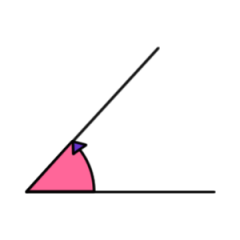
A figure formed by two rays, segments, or lines (sides) that share an endpoint (vertex)
|
|
|
Degree
|
A unit of measurement for angles; °
|
|

m<R (m angle R)
|

the measure of <R (angle R)
|
|
|
Angle Addition Postulate
|

If E is on the interior of <ABC, then m<ABE+m<EBC=m<ABC
|
|
|
Acute angle
|

An angle measuring greater than 0° and less than 90°
|
|
|
Right angle
|
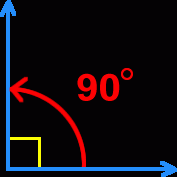
An angle measuring 90°
|
|
|
Obtuse angle
|
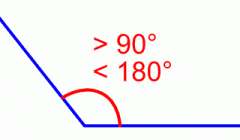
An angle measuring greater than 90° and less than 180°
|
|
|
Straight angle
|

An angle measuring 180°
|
|
|
Angle bisector
|
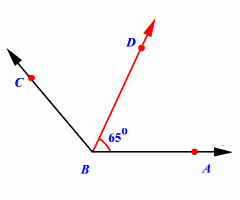
A segment, line, or ray that divides an angle into two congruent angles
|
|
|
Complementary angles
|

A pair of angles whose sum is 90
|
|
|
Supplementary angles
|
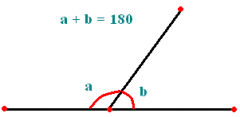
A pair of angles whose sum is 180
|
|
|
Adjacent angles
|
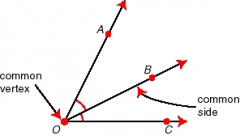
a pair of angles that share a vertex and a side but do not share interior points
|
|
|
Vertical angles
|
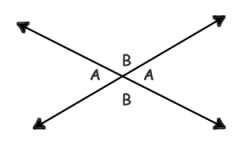
A pair of nonadjacent angles formed by two intersecting lines
|
|
|
Linear pair
|
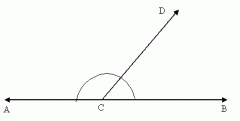
A pair of adjacent angles whose noncommon sides form opposite rays
|
|
|
Perpendicular
|
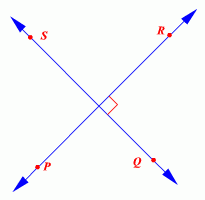
A name given to lines, segments, or rays that intersect to form a right angle;
|
|
|
Four right angles
|
Perpendicular lines form ... .
|
|
|
Congruent
|
Vertical angle’s are ... .
|
|
|
Supplementary
|
If two angles form a linear pair, then they are ... .
|
|
|
Complementary
|
If two angles form a right angle, then they are ... .
|

